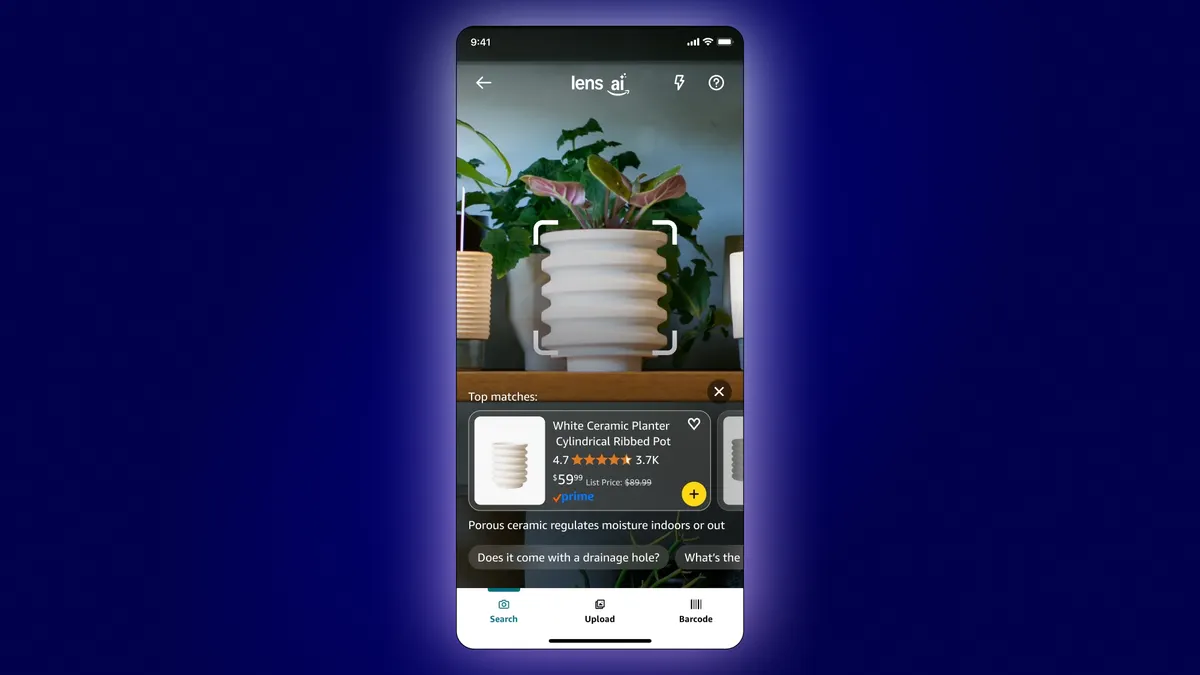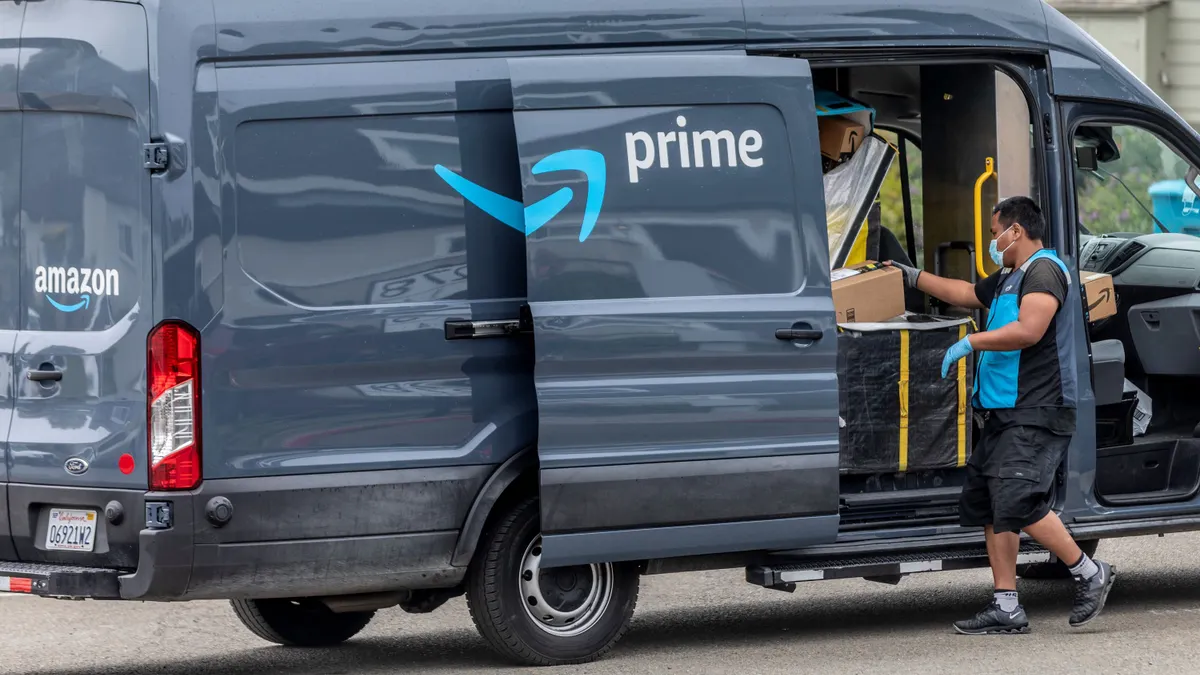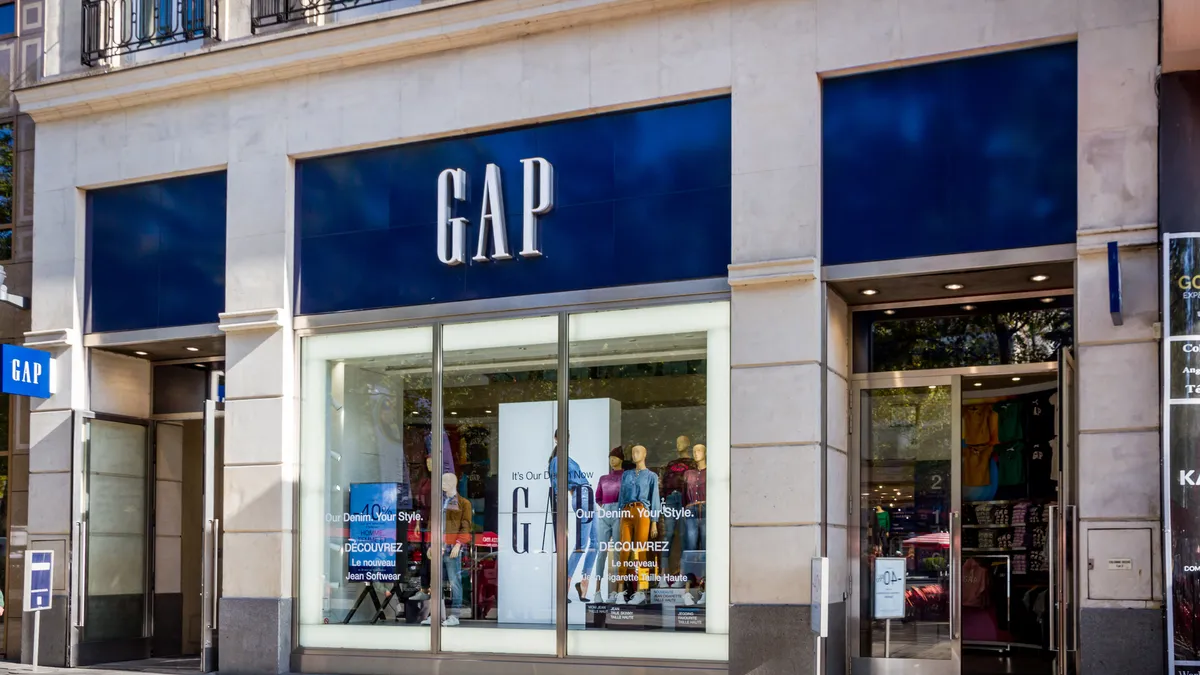Since Apple began asking users whether they would allow their online activity to be tracked, only a small percentage have agreed. That spells trouble for direct-to-consumer players who relied heavily on social media apps as part of their advertising and customer acquisition strategy in the past.
Apple's iOS 14.5 software update, released earlier this year, introduced privacy protections that require apps to ask users for permission to track their online activity. As of July, only 17% of users are allowing apps to track their online activity at a weekly rate, according to Statista. Google also plans to deploy its privacy initiative, which includes the phase-out of third-party cookies, in 2023.
"I think it's a scramble," said Alex Song, CEO of growth acceleration platform DojoMojo. "We're approximately four or five months into the thrash, and I think everyone's trying to figure out where to allocate their capital most effectively."
DTC companies have focused a large part of their spending dollars on third-party channels like Facebook, Instagram or Google Ads to build their brand and drive traffic for years. But with these new tracking regulations, DTC brands — and especially startups — may have trouble informing future merchandising decisions without data on the effectiveness of their ads. And without efficient ad targeting, the cost of customer acquisition ultimately goes up, experts said.
"For the most part, if you cannot figure out digital advertising, you cannot scale past $3 million in top line, full stop."

Alex Song
CEO of DojoMojo
Brands just a couple of months ago were able to gain access to detailed tracking that allowed them to understand their customers' purchasing behavior and pathways. But the new iOS 14.5 update means that while brands can still serve push ads, they can't see whether consumers used their phone to make a purchase.
Which, Song said, is "scary because the way an early-stage business is operating is they need really, really disciplined controls around how they're spending their very limited capital and resources — [that's] the nature of a startup."
Consumer privacy comes at a hefty cost for DTC brands
Acquiring customers online has only gotten pricier through the years. And DTC brands have had to burn millions of dollars, all in the name of earning the love of consumers.
"For the most part, if you cannot figure out digital advertising, you cannot scale past $3 million in top line, full stop," Song said.
In its recent IPO, Allbirds revealed that it spent $55.3 million in marketing-related expenses in 2020. That's 25% of its net revenue, and up from $44.4 million in 2019. Casper spent $156.8 million on advertising expenses in 2020, about 32% of its net revenue, and $155 million in 2019. Wayfair spent $1.4 billion in 2020, roughly 10% of its net revenue, and $1.1 billion in 2019.
All three have racked up large losses. It took the pandemic-driven boom in household goods for Wayfair to finally turn a profit — a momentum home retailers might not be able to sustain.
"If your advertising becomes less efficient, then that certainly has an impact. It means that there are more ways that your cost per acquisition goes up," said Andrew Frank, research vice president at Gartner. "There's a lot of friction, I would say, that this adds to the whole process of building brand relationships with customers."
The high cost of growing their customer base certainly hasn't stopped new DTC brands from emerging in different categories. In response, DTC brands have been trying to one-up each other by allocating a significant portion of their budgets toward advertising, constantly pushing their own marketing tactics, and using humor and various creative ways to set their brand apart.
On top of that, traditional brick-and-mortar retailers are also trying to break into the DTC space — and they bring with them a trove of loyal customers that digitally native brands may not have. Nike and Under Armour have both expressed a desire to grow substantially in the channel, while Adidas outlined plans for DTC sales to make up 50% of its revenue by 2025.
Unlike DTC brands, large-scale traditional brands have established a sizable presence, a loyal customer base and bandwidth that allows them to collect data directly from their own customers, also known as first-party data, as opposed to relying on third-party sites like Facebook or Google.
"If you have a large-scale customer data or a very deep customer data, as in the case of a brand like Nike, that data won't be affected too much because you're acquiring it directly from customers with their consent," Frank said. "If you're a smaller DTC brand that doesn't have the kind of relationship that people tend to reward with that consent, then it just becomes more difficult to acquire that data and it becomes more difficult to compete with large platforms."
How brands are navigating the 'thrash'
Since Apple announced the details of the iOS 14.5 updates, Evan Maines' job as the director of media buying at Adore Me has been a lot busier, she told Retail Dive. But she wasn't too surprised upon hearing the news.
"We just didn't really know what to expect," she said. "I think it's a mixed bag: worried about what it would mean for our performance, but also recognizing that it's an opportunity for things to change in the advertising industry and knowing that this is just part of a larger trend towards more data privacy."
She said the true impact of the iOS 14.5 update on their operations was hard to assess given that the rollout came around the same time as Adore Me's seasonal slowdown.
According to data from Adore Me, iOS' cost-per-thousand-impressions following the update went up 19.5%, while Android's went up 17.4%. And though the anti-tracking measures seem to have affected iOS more, Android is still the pricier option, the company said.
Having relied on platforms like Facebook and Instagram for a few years, Maines realized that her team has "had it relatively easy." Now she's working on building out her team, testing new channels like YouTube and Pinterest, trying new ad formats and working with influencers.
"We're going back to the drawing board and re-evaluating everything," she said. "I think that it is a new world and we're trying to figure out what works for us."
Still, Randy Burt, managing director in the consumer products practice at AlixPartners, said neither the anti-tracking updates nor the impending cookie-pocalypse will impact the success of the DTC model. If anything, these measures will likely initiate innovation in the tech marketing space.
Third-party cookies aren't necessarily flawless either, he said. Though third-party cookies can identify users across their online activity, the data isn't always accurate, which is the reason why some users see ads that aren't important to them. Third-party cookies also have trouble connecting the dots across different devices that consumers use.
Because the technology has been around for roughly 25 years, "I think it's been the easy go-to solution and now that it's not going to be nearly as widely available except on the Android, you're going to see a ton of innovation" that is in line with what consumers and governments are demanding, Burt said.
Apart from innovation, Burt also anticipates the return of some traditional marketing techniques such as cohort marketing, which is when consumers are grouped based on shared experiences and traits, and contextual marketing, which pushes content that adjusts to the channel or needs of the consumer.
"I do think there's going to be a hiccup, but I don't think that it's going to have a long-term impact on the viability of the DTC model," Burt said. "In some ways, it makes the DTC even more important, because before this, and this only accelerated, I think there has been a recognition by nearly all brands that getting first-party data is critical."
Merkle's recent Customer Engagement Report reflects Burt's statement. As a likely result of the third-party cookies liquidation and other data regulations, 88% of marketers expect first-party data collection to be a high priority in 2021.
Privacy over personalization
Retailers tread a fine line when it comes to data collection. About 57% of U.S. consumers are willing to skip personalization to protect their privacy, according to a November survey from The Conference Board in partnership with Nielsen. Data breaches are also a concern for shoppers, with roughly two-thirds of consumers saying they were worried about them last holiday season, according to Generali Global Assistance's November report.
The findings of these reports may disrupt the inherent value DTC brands have had from the very beginning: delivering highly customized shopping experiences to their customers.
"If anything, people are getting more conscious of privacy than less," said DojoMojo's Song. "The Big Brother concerns and a lot of the political climate as well, we just don't trust giving our consumer data or private data out there."
Government regulations like the EU General Data Protection Regulation, California Consumer Privacy Act and California's Prop 24 threaten to further complicate brands' relationship with data collection. And though some consumers might want ads that serve them better, the vast majority of people gravitate toward privacy and security, Song said.
"I think this is an interesting moment where there is a gold rush, and everyone's out there trying to get to the front of the line, and hopefully make it and break through. I think the honest truth is, the businesses that are going to make it are already of a certain size," he said. "Sadly, the majority of the people that are entering this gold rush at this point in time, aren't going to find gold."























